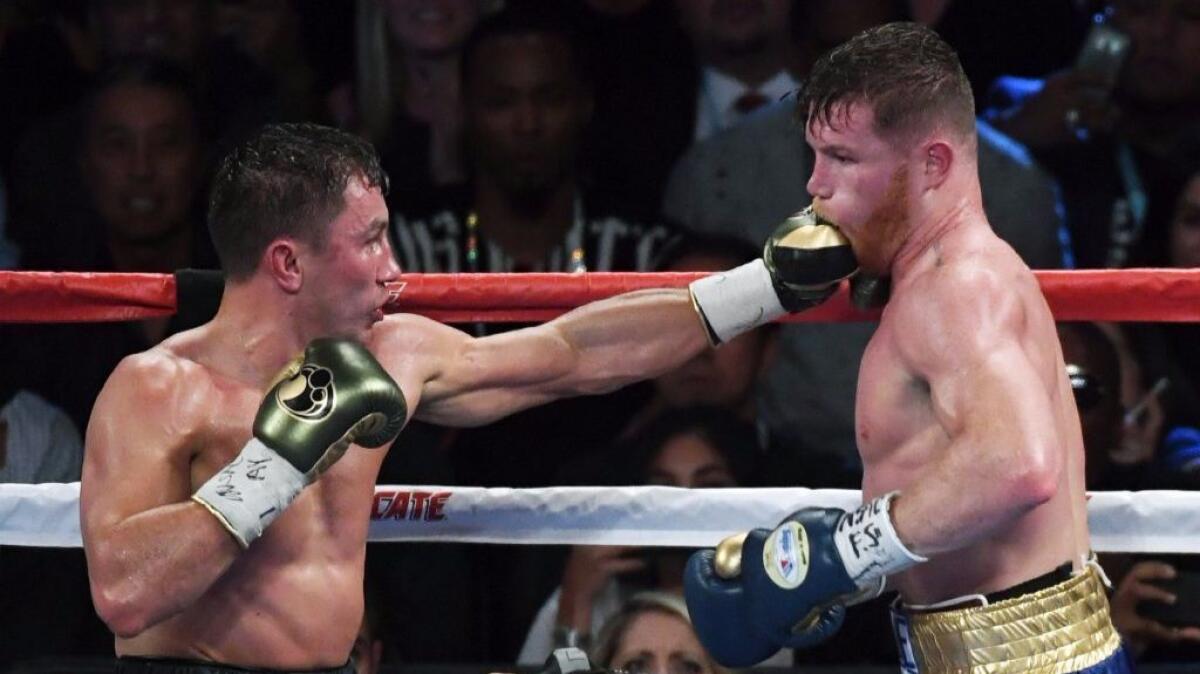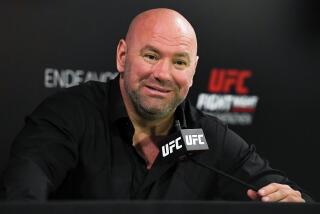A look inside boxing judging with an eye toward fixing it

Oscar De La Hoya had one question after hearing judge Adalaide Byrd’s 118-110 scorecard favoring his fighter Canelo Alvarez over unbeaten, middleweight champion Gennady Golovkin in Saturday’s fight in Las Vegas:
“What was that?”
Later, Byrd tried explaining how she inexplicably saw Alvarez winning 10 of 12 rounds in a match that others viewed as either a narrow Golovkin triumph or a dead heat. She had an expression of remorse about seeing “Canelo doing more things,” and not being nearer to the 114-114 and 115-113 (Golovkin) scores of judges Don Trella and Dave Moretti. She was told to take a break from judging.
That layoff has the potential to become permanent given the 2013 episode of Nevada judge C.J. Ross, who followed a flawed scorecard a year earlier to set up a Manny Pacquiao loss by nearly sabotaging Floyd Mayweather Jr.’s pristine record. Ross left boxing after turning in an even card for Alvarez after he’d been utterly outclassed by Mayweather.
Byrd, according to three officials familiar with her standing, will be kept off the UFC pay-per-view card Oct. 7, and is expected to be sidelined for the remainder of the year, to “take a breather,” as Bob Bennett, Nevada Athletic Commission executive director, put it Saturday night.
With more than 400 professional fights scored — and more than 100 of those coming in championship or title-elimination bouts — Byrd’s case shines intense attention on boxing judging, raising questions beyond how she ended up scoring such an important bout. Here is an attempt to provide some answers:
Why was Byrd judging Golovkin-Alvarez?
Bennett said he’d been impressed by Byrd’s body of work since he became executive director in April 2014. Golovkin-Alvarez was her 24th bout of the year, and despite a Top Rank executive recently chiding her for giving Jessie Magdaleno two extra rounds in his November 2016 title victory over Nonito Donaire, Byrd emerged from a pool of eight candidates.
“She works hard,” Bennett said. “She had judged 115 of these title-bearing fights [since 1997] and consistently performed well under the high-pressure of fights in Las Vegas since I’ve been here.”
How does someone become a judge?
In California, executive officer Andy Foster said prospective judges who contact his office are first screened. They can be pointed to work in amateur boxing programs and after that, more intensive training is required before working a pro bout.
“Could you come off the street and judge? No,” Foster said. “Plus, you already have judges who are licensed, so … everyone has to work their way up.”
International Boxing Hall of Fame member Marc Ratner, the former Nevada commission executive director who presides over UFC regulation matters, said it was his policy to place a newer judge with two experienced scorers, or have them “shadow judge,” by turning in an unofficial card decided by three others.
Is the judging pool deep enough to ensure quality scoring?
Bennett summoned an Italian judge to bring an international opinion to Mayweather’s Aug. 26 victory over Conor McGregor, and Ratner said with respected Nevada judges like Dave Moretti and Burt Clements, states have ample opportunity to secure highly qualified scorekeepers for big fights while developing others.
“Part of the problem is that, unlike refereeing in football, when you get a game every week, there may be a month between fights,” Ratner said. “And you can’t send a judge to score sparring like you can send a referee there to stay sharp.”
Is there a uniform scoring criteria judges are supposed to consider?
Yes, but it’s a bit like asking everyone to obey speed limits.
The Assn. of Boxing Commissions (ABC) has set standards that include this language:
“At any given point of a round, you must know who is winning. At the conclusion of the round, the contestant who has won the round, no matter how minute the margin, is entitled to that round. The difference might have been a single jab, or a defensive move, yet it was still enough to give that boxer the edge. …
“Determination should not be mistaken for aggressiveness when one boxer continuously moves forward boring in on the opponent, regardless of the number of punches being received. If an attack is not effective, the boxer cannot receive credit for it. … The boxer must score punches while blocking and avoiding the opponent’s counter punching. An aggressive boxer who continues boring in and getting hit from every angle should not be awarded points based on aggressiveness.”
“In this fight, [Golovkin] was moving forward strongly, throwing a lot of punches and landing, so I scored those middle rounds for him because he was the aggressor,” said Ratner, finishing with an unofficial 115-113 card for Golovkin.
Judges’ scores are collected immediately after each round by an official who forwards them to another authority tabulating the entire card, then handing it off to the ring announcer who reads the scores.
How are judges selected before each fight?
“I have a pretty good idea of who my best people are, and I have no problem assigning them [to important fights] over and over,” Foster said. “It becomes a feel based on facts. If a judge has a bad outing, you don’t want to put them right back out there right away, because sometimes judges are missing things — whether it be bad luck or bad angles. The best thing to equate it to is a hitting slump in baseball.”
What’s the evaluation process that judges go through?
Beyond post-fight reviews, judges and referees engage in either private annual reviews or group seminars, trying to get to what Ratner referred to as a “commonality of philosophy … you might not agree with what the commission wants, but this is what we want.”
Foster staged group discussions in January and will again this weekend. He also incorporates a “judge-at-home” program to maintain sharpness while sharing performance grading.
Ratner says a judge posting 90% of their round-by-round scoring in the majority is an acceptable performance.
Why do judges sit where they sit? Is it the best seat in the house?
From their separate elevated perches in the middle of the ring, judges have a good opportunity to assess the force of the punch, with the different angles ensuring that effective blows are rewarded by at least two of them.
“When you’re sitting in that seat, you should be using all of your senses, and not just your eyes,” Foster said. “It’s important to hear a really hard punch and evaluate how the person getting hit responds to that punch. Sitting there as close as anyone in the building is critical to that.”
What can be done to improve judging?
In UFC fights, judges have access to view a small television monitor for moments when the action can’t be viewed from their exact vantage point. Ratner suggests bringing those monitors to boxing and Foster said it’s possible the California commission could soon discuss doing that.
“When ‘Fighter A’ is away from you, punching, and all you can see is his back, and you can’t tell if those punches are landing, there’s nothing wrong with a monitor — no [play-by-play] sound, no replay — just to take a look,” Ratner said.
Another commissioner suggested providing live punch statistics to the judges immediately after each round.
“It’s important to get the score right, more than it’s important to do what we’ve been doing for 100 years,” Foster said. “And there are tools that are out there to help the judges get the score right without changing the whole game. It’s worth exploring those, to help not just the judges, but the fighters and the sport.”
How much is a judge paid for a big prize fight?
In Mayweather-Manny Pacquiao in 2015 and in Mayweather-McGregor, each judge earned $20,000.
The rate for a main event such as Saturday’s lightweight title fight at the Forum is $1,600, and the biggest seen in California recently is $3,100.
What’s next for Byrd?
It’s believed Byrd is taking a vacation of sorts. When she returns, she’ll huddle with Bennett to dissect a replay of Golovkin-Alvarez, explaining her scoring and addressing her future, gauging if it was just a bad night or a sign she should retire. Given the Ross case, it would be stunning to see Byrd working another high-profile fight in any jurisdiction, according to multiple commissioners.
Twitter: @latimespugmire
More to Read
Go beyond the scoreboard
Get the latest on L.A.'s teams in the daily Sports Report newsletter.
You may occasionally receive promotional content from the Los Angeles Times.











